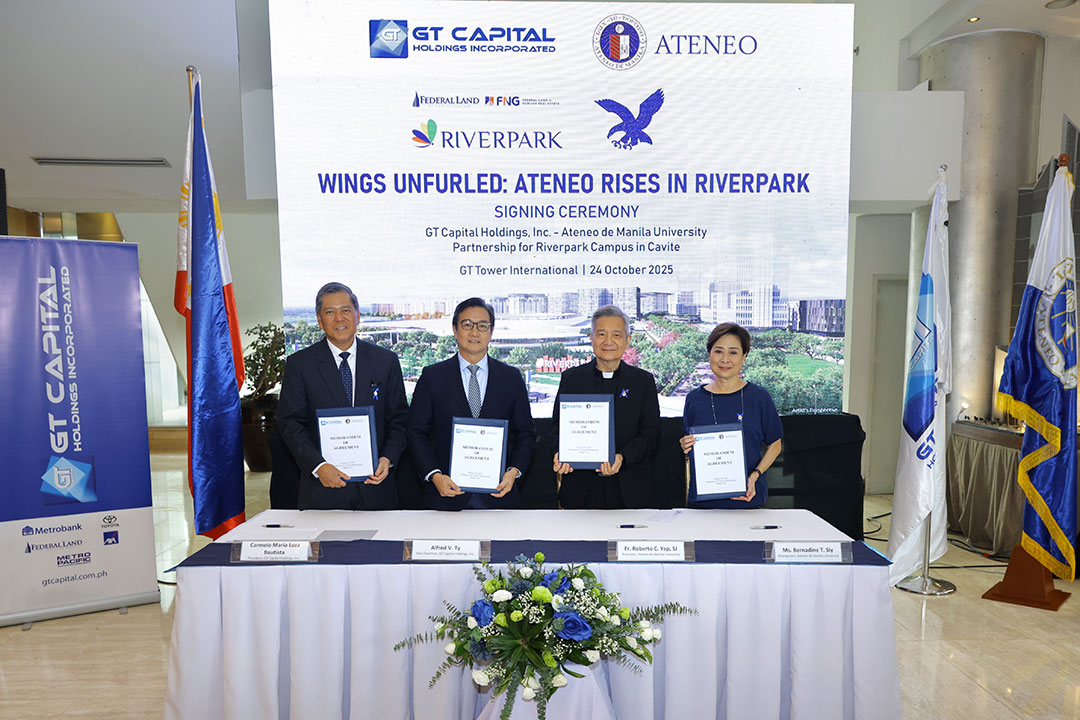
Upgrade to High-Speed Internet for only ₱1499/month!
Enjoy up to 100 Mbps fiber broadband, perfect for browsing, streaming, and gaming.
Visit Suniway.ph to learn
Some economists are sounding the alarm that the Philippines is rapidly de-industrializing, basing their observation on the decreasing share of manufacturing as a percentage of gross domestic product (GDP). It is true that manufacturing is not growing as fast as some service sectors like IT-BPM, logistics, and tourism. Unlike our “tiger economy” neighbors, our exports of manufactured goods are a lagging sector of the economy, with electronic products and semi-conductor devices accounting for 60 percent of our total exports. However, to calm these fears, I’d like to remind the alarmists that ”industry” in the National Income Accounts includes Mining, Construction, and Public Utilities. As long as these three other industrial sectors are growing faster than the average GDP growth, there is no need to talk about “de-industrialization.” This should be another reason why we must commit to spending an increasing share of our GDP on infrastructure and aggressively fighting corruption.
Let’s examine the data for the “industrialized” economies of East Asia. The “industry sector” accounts for 36.8 percent of GDP for Taiwan, 31.6 percent for South Korea, 32.1 percent for Thailand, 37.6 percent for Vietnam, and 39.3 percent for Indonesia. Very clearly, the Philippines is not in the same league, with its “industry sector” accounting for only 28.2 percent of GDP. If we try to explain this low share, it becomes obvious that our underdeveloped manufacturing sector mostly accounts for it. Manufacturing accounts for 33 percent of the GDP of Taiwan, 24.3 percent of South Korea, 27 percent of Thailand, 19.8 percent of Indonesia, and 16.7 percent of Vietnam. For the Philippines, the share is the lowest at 16.2 percent of GDP. The question now arises: Can we still industrialize even if our manufacturing continues to account for a low percentage of our GDP?
Let me answer this question in two stages. First, there is still room for our manufacturing sector to reach levels comparable to Vietnam and Indonesia (17 to 20 percent) as more companies cater to the lucrative domestic market for manufactured goods related to basic consumer demand for food, clothing, shelter, health, education, and other necessities. These manufacturing sectors can reach globally competitive levels without having to export, thanks to our large local markets, unlike the first East Asian “tigers” whose manufacturers had to export or perish. In fact, this is clearly evidenced by Singapore and Hong Kong, whose manufacturing sectors have practically disappeared. Second, regarding manufactured exports, the Philippines still has an opportunity to significantly expand the export of high-value chips that can be relocated from China. This is possible as the U.S. government addresses security concerns arising from having too large a concentration of chip requirements (especially for defense goods) in China—a concern that reached panic proportions, especially in the Trump Administration. Given these possibilities, **manufacturing could be raised to at least 19 percent, equivalent to Indonesia's current level.
Then there is the mining sector. If our policymakers can balance concerns about the physical environment, mining can assume part of the industrialization role that manufacturing is unable to play. Along with Indonesia, we are among the most mineralized countries in Asia. In 2024, mining in Indonesia constituted a high of 12 percent of GDP. Another comparable mineralized country, Chile, sees its mining industry account for as high as 13 percent. In great contrast, mining in the Philippines contributes only one percent to GDP. There is great room for improvement if the Government, the business sector, and civil society can craft a policy that balances poverty eradication with concern for the physical environment, especially in the island of Palawan.
Mining plays a strategic but controversial role in the Philippine economy. This part of the industrial sector contributes to exports (about five to seven percent), employment, and countryside development (since most mineral deposits are in economically depressed rural areas). With the worldwide concern about protecting the physical environment (sustainable development), Philippine mining must face criticisms for negative environmental and social impacts (e.g., displacement of indigenous communities). It is, therefore, necessary that the whole of Philippine society agree on how to reap the greatest economic benefits from mining while minimizing the environmental and social costs.
Mining and quarrying contribute about one percent to 1.5 percent of the Philippine GDP (as of 2024). Although relatively small in share, it has a high multiplier effect, benefiting industries such as construction, power, and manufacturing. In 2024, minerals accounted for roughly five to seven percent of total Philippine exports, valued at around $6 to $7 billion. Top exports were nickel, gold, copper, and chromite. The Philippines is one of the world's top producers of nickel, a key input for electric (EV) batteries and practically all digital devices indispensable to Industrial Revolution 4.0. Mining directly employs 250,000 workers and indirectly supports over 1.5 million jobs (transport, services, small-scale mining). It is a key source of livelihood in remote and mineral-rich regions such as Caraga, Cordillera, and Palawan. The mining sector generates significant government revenues through excise taxes (four percent on mineral products), royalties (especially from operations in mineral reservations), and corporate income taxes and fees to local governments. In 2024, total taxes and fees from mining were estimated at ₱30 billion to ₱40 billion.
It is incumbent on the Philippine Government to promote responsible and sustainable mining, with new investments in nickel processing, copper smelting, and green minerals to support global clean energy supply chains. Recently, officials of one of the largest mining enterprises in the country, DMCI Mining Corp., expressed satisfaction with a new fiscal regime for large-scale mining: “We see the new fiscal framework as an opportunity to strengthen the mining sector’s role in generating long-term value for the investors, communities and the economy.” The new law imposes royalties and profit-based levies on mining companies, boosting government revenue and sharing more of the gains with host communities. It also introduces a windfall tax on companies whose profit margins exceed 30 percent and treats each mining contractor as a separate taxable entity.
To be continued.

 3 hours ago
1
3 hours ago
1



